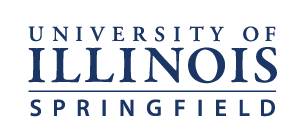Assessment is a word that is used a lot in education. A great deal of scholarship focuses on the importance of assessment in higher education. But what do we mean by assessment? Instructors sometimes conflate grading with assessment. It is more than grading. Assessment is the strategic measurement of the extent of student learning in a course. Assessments should link student performance to specific learning objectives and provide feedback to both the instructor and the student on the performance of the student and areas for improvement.
Formative assessment
Formative assessments are used as part of the learning process. A formative assessment should help both the student and instructor monitor student learning. In this way, formative assessments help instructors to improve their teaching because they know where students are struggling and can address areas of concern quickly. Formative assessments also help students to become more self-directed. When students know their strengths and weaknesses, they can target their studies or ask for additional help.
Formative assessments are typically low stakes — either not graded or having a low point value. For example, you might ask students to:
- Write a one minute paper on a topic to demonstrate current understanding
- Summarize a lecture or reading in one or two sentences
- Submit a research proposal, draft, or annotated bibliography for early feedback on a large project
- Ask students to submit their muddiest point on a module or chapter.
Summative assessment
Summative assessments evaluate student learning at the end of a module, chapter, or semester. Student work is typically measured against a standard or benchmark.
Typically, summative assessments are high stakes, or worth a high percentage of the final grade. Summative assessments are familiar aspects of most courses:
- Final projects
- Research papers
- Exams
Want to learn more? Iowa State's Formative and Summative Assessment page is a great resource.
Authentic Assessment
Authentic assessments require students to apply concepts they have learned to real-world situations by having them complete meaningful task-based assessments. This type of assessment engages a variety of skills and measures higher levels of learning than traditional assessments. Authentic assessment helps students practice creative thinking and problem-solving, and allows for multiple paths to demonstrate knowledge.
Most authentic assessments involve complex questions and tasks that do not have straightforward solutions; students must research, brainstorm, practice, draft, and refine solutions in order to complete the assignment.
Examples of authentic assessments you can use in an online learning environment include:
- Peer Review
- Self-Assessment
- Problem Based Learning
- Online Journaling
- Interpretation of charts/graphs
- Have students design assessments
- Require answer justification (why is the answer correct?)
- Peer evaluation of reflections/essays
- Experimental interpretation- analysis of research-based findings
For more reading on authentic assessment:

